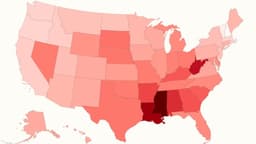Home / Environment / Sea Level Rise Threatens 5,500 US Hazardous Sites
Sea Level Rise Threatens 5,500 US Hazardous Sites
20 Nov
Summary
- Thousands of US hazardous sites face flooding by 2100 due to sea level rise.
- Low-income and minority communities are disproportionately at risk.
- Reducing emissions can significantly decrease the number of threatened sites.

Thousands of hazardous sites along the U.S. coast face inundation by the turn of the century due to unchecked heat-trapping pollution, according to a new study. Researchers identified 5,500 sites storing or handling sewage, trash, oil, and gas that could be flooded by 2100, with a significant portion at risk as soon as 2050. Communities of color and low-income populations bear the brunt of this environmental threat.
The study highlights that even moderate reductions in planet-warming emissions could prevent hundreds of sites from facing flood risk by 2100. These hazardous locations include fossil fuel ports, power plants, refineries, and sewage treatment facilities, with a majority concentrated in states like Louisiana, Florida, and California.
Exposures from flooded hazardous sites can lead to immediate health issues such as diarrhea and vomiting, and potentially long-term damage including cancer and organ damage. Experts emphasize the urgent need for federal, state, and local governments to invest in hazard mitigation and integrate climate risk assessments into resilience planning.




